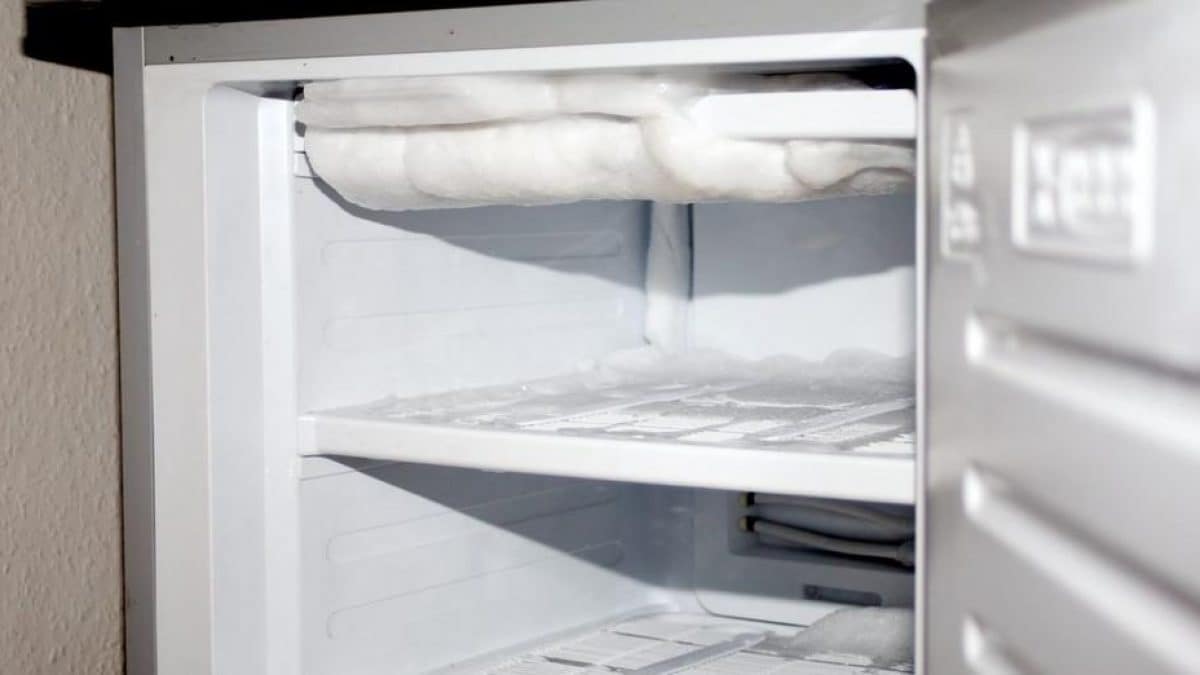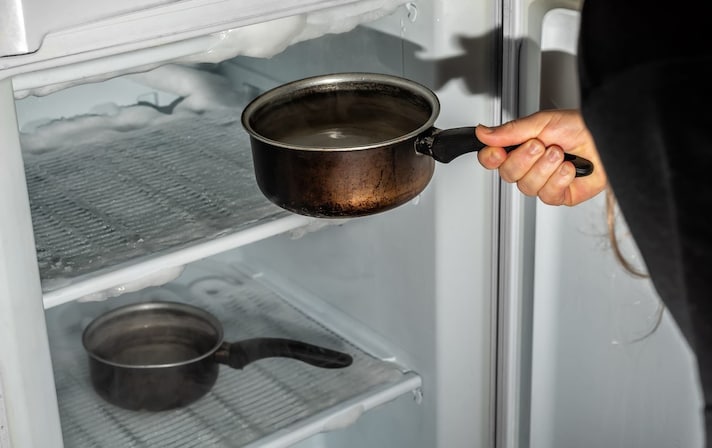
The most useful appliance in existence, the one that allows us to always have fresh food, ready to use in our recipes: we're talking about the refrigerator (with its attached freezer), the tool we truly could never do without. Small or large, powerful or otherwise, like any appliance, the refrigerator must be used correctly and cared for through a few simple maintenance procedures.
Among these, defrosting and eliminating the ice buildup you see forming over time is undoubtedly one of the most important: "cleaning" the refrigerator and freezer of ice ensures better operation, thus avoiding wasting cold and electricity— an undefrosted refrigerator consumes up to 20% more energy —and thus keeping food at the right temperature.
How do you quickly defrost the refrigerator? Can you do it without turning it off? How long does it take, and what would happen if you didn't defrost it? If you've ever asked yourself any of these questions, you're definitely in the right place: here's a quick, practical, and effective guide to defrosting your refrigerator and freezer, and getting them back to working like new.
How to Defrost Your Fridge and Freezer
Let's see how to defrost your refrigerator simply and effectively, without risking damaging not only your appliance but also the food you store inside. Your refrigerator and freezer should be defrosted at least twice a year, preferably during the changing seasons. Here's how:
- Empty the fridge and freezer completely: To defrost them, they must be empty; therefore, you will need to remove all the food from them. To ensure you don't lose any food, we recommend planning the day you'll defrost your fridge and freezer, thus avoiding overfilling them in the days leading up to the defrost. Also, get some freezer bags and freezer bags (the kind readily available at the supermarket): collect the food inside them so that it stays at the right temperature and doesn't experience dangerous temperature fluctuations. In more serious cases, the ice may have "held" food packages or bottles hostage: in this case, you will need to wait until the defrosting process has begun to "free" them.
- Turn off the refrigerator: Once emptied, the refrigerator should be turned off. To do this, you can unplug it or simply set the thermostat to zero. As a precaution, remove the shelves from the inside of the refrigerator and place rags at the bottom of the interior and on the floor in front of the appliance: these will stop any leaks.
- Speed up the process: Once you've emptied and turned off the refrigerator, the ice inside will begin to melt. To speed up the process, you can place a bowl of hot water and vinegar inside the refrigerator and freezer: the steam will act and the ice will melt more easily. Alternatively, you can dab the ice on the bottom of the refrigerator with rags soaked in hot water or sprinkle coarse salt on the ice and let it sit before removing it with a spatula.
- Clean the shelves and interior: While the ice is melting, you can use this time to clean and sanitize the drawers, shelves, and interior surfaces of the refrigerator and freezer. You don't necessarily need to use chemicals to do this; a solution of warm water, vinegar, and baking soda will do.
- Removing the ice: Most of the ice will have melted at this point, and you can dry the water with dish towels. However, in more critical cases, you may need to manually remove any remaining ice. To remove the ice, it's important not to use knives or iron spatulas, which can damage the appliance's interior. It's better to use a special plastic ice scraper.
- Turn the refrigerator and freezer back on and refill them: At this point, the defrosting process is complete. All you have to do is turn the refrigerator back on, set the thermostat to the right temperature, and replace the shelves inside the refrigerator. Once the appliance has reached the ideal temperature, you can refill the refrigerator and freezer. Check that the frozen foods are still in perfect condition: if not, it's best to consume them immediately or throw them away.
How long does it take to defrost a refrigerator and freezer? The answer is not straightforward, as several factors affect the time, including size, model, amount of ice buildup, and how long it's been since you last defrosted the refrigerator. Generally, however, the time required for a refrigerator and freezer to be completely defrosted ranges between 90 and 120 minutes.

The Trick to Defrosting it Quickly: Hot Water and Salt
To defrost your freezer more quickly and effectively, a simple and safe trick is to use a solution of hot water and salt in a spray bottle. The heat of the water helps melt the ice, while the salt lowers the freezing point, making it easier to detach the ice even in cold temperatures. Simply turn off the freezer, empty it completely, and spray the inside of the freezer with a spray bottle filled with very hot water and a generous amount of table salt. Closing the door for about ten minutes will allow the steam generated to begin melting the ice from the interior walls. This is a practical, safe, and accessible method that eliminates the need to force it open with sharp objects or risk damaging the freezer's surfaces.
Using hot water and salt to defrost your freezer won't damage your refrigerator if used carefully. However, there are some important precautions to follow to avoid risks. Here's when it can become dangerous.
- Thermal shock: Pouring boiling water directly onto cold surfaces can cause cracks in the plastic lining or, worse, damage hidden pipes. Use very hot but not boiling water (about 140-160°F/60–70°C) and always in containers.
- Moisture in electrical components: If water enters cracks, grilles, or vents, it can cause malfunctions or oxidation. Keep water in a spray bottle, basin, or soaked cloth, without direct spills.
- Excessive salt use: Small amounts of dissolved salt won't harm anything, but it shouldn't be sprinkled pure on interior surfaces, as it could damage seals or plastic over time. Always dissolve salt in water; don't use it "dry."
;Resize,width=767;)
